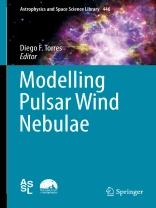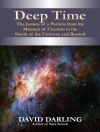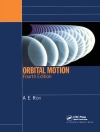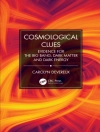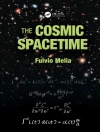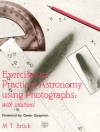In view of the current and forthcoming observational data on pulsar wind nebulae, this book offers an assessment of the theoretical state of the art of modelling them. The expert authors also review the observational status of the field and provide an outlook for future developments.
During the last few years, significant progress on the study of pulsar wind nebulae (PWNe) has been attained both from a theoretical and an observational perspective, perhaps focusing on the closest, more energetic, and best studied nebula: the Crab, which appears in the cover. Now, the number of Te V detected PWNe is similar to the number of characterized nebulae observed at other frequencies over decades of observations. And in just a few years, the Cherenkov Telescope Array will increase this number to several hundreds, actually providing an essentially complete account of Te V emitting PWNe in the Galaxy. At the other end of the multi-frequency spectrum, the SKA and its pathfinder instruments, will reveal thousands of new pulsars, and map in exquisite detail the radiation surrounding them for several hundreds of nebulae.
By carefully reviewing the state of the art in pulsar nebula research this book prepares scientists and Ph D students for future work and progress in the field.
Inhoudsopgave
Gamma-ray observations of PWNe (Ge V to Te V).-Pulsar wind nebulae and transitional pulsars.- Particle Acceleration in pulsar wind nebulae.- MHD / Radiative simulations of pulsar wind nebulae.- Observations of note relating Fermi pulsars and nebulae.- Prospects for PWN observations in radio facilities.- Electrons and positrons from pulsar wind nebulae.- Radio Properties of pulsar wind nebulae.- MHD modelling: aims, usage, scales assessed, caveats, codes.- Striped winds.- Prospects for PWN observations in X-ray facilities.- X-ray observations of PWNe.- Prospects for PWN observations in gamma facilities (CTA and satellites).- 3D Modelling of Crab.- A multi-wavelength, observational view of Crab flares.- What do we know from optical/IR observations of nebulae?
Over de auteur
Prof. Torres was born in Buenos Aires, Argentina, where he obtained a doctoral degree in physics from the National University at La Plata. His Ph.D. was on cosmology and astrophysics of extended gravitational theories. After several years in fellowships (at Sussex University in UK, Institute for Radioastronomy in Argentina, Princeton University and the Lawrence Livermore Laboratory in the USA) he moved to Barcelona to work at the Institute of Space Sciences, of which he is Director since March 2016. His research focuses on Galactic compact objects. He has published more than 200 papers in international journals.
